The University’s Leaders – Past and Present
 Marc B. Parlange, 2021 – present - Marc Parlange became president of the University of Rhode Island on Aug. 1, 2021. He intends to extend and amplify the university’s presence on a global scale through collaboration both on the University’s campuses and with other institutions of higher learning the world over.
Marc B. Parlange, 2021 – present - Marc Parlange became president of the University of Rhode Island on Aug. 1, 2021. He intends to extend and amplify the university’s presence on a global scale through collaboration both on the University’s campuses and with other institutions of higher learning the world over. 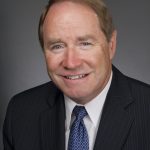 David M. Dooley, 2009 – 2021 - With more than 30 years of experience in public and private higher education, David M. Dooley became the University of Rhode Island’s 11th president in July 2009. He reshaped the University's strategic direction, creating a set of broadly defined goals critical to the University’s evolution.
David M. Dooley, 2009 – 2021 - With more than 30 years of experience in public and private higher education, David M. Dooley became the University of Rhode Island’s 11th president in July 2009. He reshaped the University's strategic direction, creating a set of broadly defined goals critical to the University’s evolution.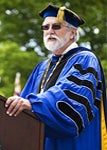 Robert L. Carothers, 1991 – 2009 - During his 18-year tenure President Carothers made a series of progressive changes to the university's structure, infrastructure and curriculum. The University became known as a preeminent public institution for higher education, and a comprehensive branding initiative clearly defined the University's distinctiveness in the marketplace.
Robert L. Carothers, 1991 – 2009 - During his 18-year tenure President Carothers made a series of progressive changes to the university's structure, infrastructure and curriculum. The University became known as a preeminent public institution for higher education, and a comprehensive branding initiative clearly defined the University's distinctiveness in the marketplace.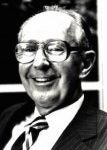 Edward D. “Ted” Eddy, 1983 – 1991 - President Eddy, known as "Ted" to many, was successful in enhancing the University's image nationally and abroad during his tenure. He was instrumental in expanding the Graduate School of Oceanography and improving its programs and research initiatives.
Edward D. “Ted” Eddy, 1983 – 1991 - President Eddy, known as "Ted" to many, was successful in enhancing the University's image nationally and abroad during his tenure. He was instrumental in expanding the Graduate School of Oceanography and improving its programs and research initiatives. Frank Newman, 1974 – 1983 - President Frank Newman navigated the University through troubled times and reversed a tide of declining enrollment. He created the College of Human Science and Services, revamped the general education curriculum to emphasize global perspectives, launched the research vessel Endeavor, and recognized the importance of higher education in the lives of older students.
Frank Newman, 1974 – 1983 - President Frank Newman navigated the University through troubled times and reversed a tide of declining enrollment. He created the College of Human Science and Services, revamped the general education curriculum to emphasize global perspectives, launched the research vessel Endeavor, and recognized the importance of higher education in the lives of older students.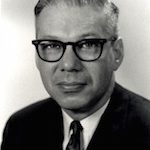 Werner A. Baum, 1968 – 1973 - Werner A. Baum had been the deputy administrator of the Environmental Science Services in the U. S. Department of Commerce before he was named as the University's seventh president.
Werner A. Baum, 1968 – 1973 - Werner A. Baum had been the deputy administrator of the Environmental Science Services in the U. S. Department of Commerce before he was named as the University's seventh president.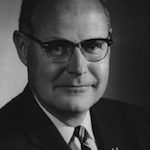 Francis H. Horn, 1958 – 1967 - The University's sixth president, Francis "Fran" Horn led the University as it transitioned from a small 'country' college into what would become an internationally known university.
Francis H. Horn, 1958 – 1967 - The University's sixth president, Francis "Fran" Horn led the University as it transitioned from a small 'country' college into what would become an internationally known university.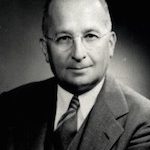 Carl R. Woodward, 1941 – 1958 - Carl Raymond Woodward came to the Rhode Island State College as president, and just one year later became president of The University of Rhode Island. President Woodward led the charge to grant the college with its university status.
Carl R. Woodward, 1941 – 1958 - Carl Raymond Woodward came to the Rhode Island State College as president, and just one year later became president of The University of Rhode Island. President Woodward led the charge to grant the college with its university status.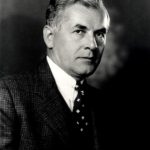 Raymond George Bressler, 1931 – 1940 - Raymond George Bressler was approached about the presidency at the Rhode Island State College in 1930. In April 1931, at the age of 43, he accepted the position, relieving then Interim President John Barlow.
Raymond George Bressler, 1931 – 1940 - Raymond George Bressler was approached about the presidency at the Rhode Island State College in 1930. In April 1931, at the age of 43, he accepted the position, relieving then Interim President John Barlow.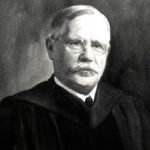 Howard Edwards, 1906 – 1930 - Howard Edwards was the University's longest-serving president. During his 24-year tenure, what was then the Rhode Island College of Agricultural and Mechanical Arts was renamed Rhode Island College.
Howard Edwards, 1906 – 1930 - Howard Edwards was the University's longest-serving president. During his 24-year tenure, what was then the Rhode Island College of Agricultural and Mechanical Arts was renamed Rhode Island College.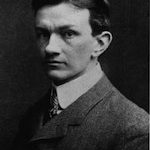 Kenyon L. Butterfield, 1903 – 1906 - Before joining the Rhode Island College of Agricultural and Mechanical Arts, President Kenyon Butterfield had been an Instructor in Rural Sociology at the University of Michigan.
Kenyon L. Butterfield, 1903 – 1906 - Before joining the Rhode Island College of Agricultural and Mechanical Arts, President Kenyon Butterfield had been an Instructor in Rural Sociology at the University of Michigan.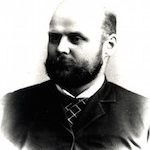 John Hosea Washburn, 1892 – 1902 - John H. Washburn was appointed to be principal of the Rhode Island Agricultural School in 1889. The land for the college had been appropriated for Rhode Island with the passage of the Morrill Act of 1862. Washburn's first order of business was to wrest the appropriation of land-grant status from Brown University for the Rhode Island Agricultural School to become the official land-grant institution in Rhode Island.
John Hosea Washburn, 1892 – 1902 - John H. Washburn was appointed to be principal of the Rhode Island Agricultural School in 1889. The land for the college had been appropriated for Rhode Island with the passage of the Morrill Act of 1862. Washburn's first order of business was to wrest the appropriation of land-grant status from Brown University for the Rhode Island Agricultural School to become the official land-grant institution in Rhode Island.
